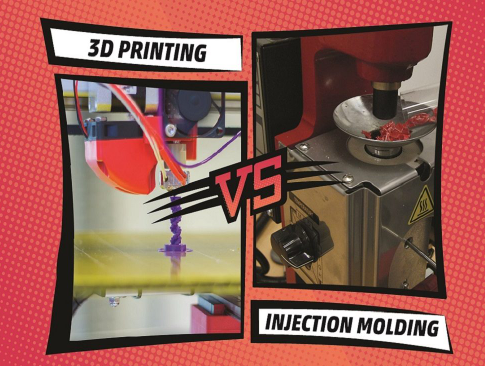
The cost comparison between 3D printing and injection molding depends on several factors, including the volume of parts, complexity of the design, material costs, and production time. Here’s a detailed breakdown:
Initial Costs:
- 3D Printing:
- Initial Investment: Relatively low. Basic 3D printers can be affordable, and even high-end industrial printers are generally cheaper than injection molding machinery.
- Tooling Costs: No need for expensive molds. You only need the 3D printer and the digital file of the part.
- Injection Molding:
- Initial Investment: High. Requires expensive molds, which can cost thousands to tens of thousands of dollars depending on complexity.
- Tooling Costs: Significant upfront cost for creating molds, but this cost is spread over the production run.
[elementor-template id=”4330″]
Production Volume:
- Low Volume:
- 3D Printing: More cost-effective for low volumes (typically less than 100-1000 parts). No need for molds and setup is quick.
- Injection Molding: Expensive for low volumes due to high mold costs and setup time.
- High Volume:
- 3D Printing: Costs can become prohibitive as volume increases due to slower production speeds and higher material costs per part.
- Injection Molding: Much more cost-effective for high volumes. Once the mold is made, the cost per part drops significantly.
Complexity and Customization:
- Complex Designs:
- 3D Printing: Excellent for complex, intricate designs. No additional cost for complexity; any shape that can be modeled can be printed.
- Injection Molding: More complex designs can significantly increase mold costs and may require additional tooling and time.
- Customization:
- 3D Printing: Ideal for customization and small batches. Each part can be different without additional cost.
- Injection Molding: Not suited for customization without creating new molds, making it costly for producing customized parts.
Material Costs:
- 3D Printing:
- Typically higher per unit of material. Specialized materials can be expensive, and there is often more waste compared to injection molding.
- Injection Molding:
- Generally lower per unit of material, especially for large runs. More efficient use of materials and less waste.
Production Time:
- 3D Printing:
- Slower production times per part compared to injection molding. Suitable for prototyping and low-volume production.
- Injection Molding:
- Faster production times once the mold is made, especially for high volumes. Capable of producing thousands of parts quickly.
[elementor-template id=”4331″]
Quality and Finish:
- 3D Printing:
- Generally produces parts with a lower surface finish quality and potential layer lines. Post-processing may be required for a smooth finish.
- Injection Molding:
- Produces high-quality parts with excellent surface finish right out of the mold. Ideal for end-use parts.
Summary:
- 3D Printing: More cost-effective and flexible for low-volume production, prototyping, and complex or customized designs. Higher per-part costs for large volumes.
- Injection Molding: More economical for high-volume production, offering lower per-part costs once the mold is made. Higher initial costs due to mold creation, but produces high-quality parts quickly for large runs.
In conclusion, 3D printing is generally more expensive per part than injection molding for high-volume production but offers significant advantages for low-volume, customized, or complex parts. The choice between the two methods depends on your specific production needs and budget constraints.
Related Conten: Custom Plastic Fabrication
 DTG Mould Trade Process |
|
| Quote: | According to sample, drawing and specific requirement. |
|---|---|
| Discussion | Mold material, cavity number, price, runner, payment, etc. |
| S/C Signature | Approval for all the items. |
| Advance | Pay 50% by T/T |
| Product Design Checking | We check the product design. If some position is not perfect, or can not be done on the mould, we will send customer the report. |
| Mold Processing | Send report to customer once each week |
| Mold Testing | Send trial samples and try-out report to customer for confirmation |
| Mold Modification | According to customer’s feedback. |
| Balance Settlement | 50% by T/T after the customer approved the trial sample and mould quality. |
| Delivery | Delivery by sea or air. The forwarder can be designated by your side. |
 |
|

